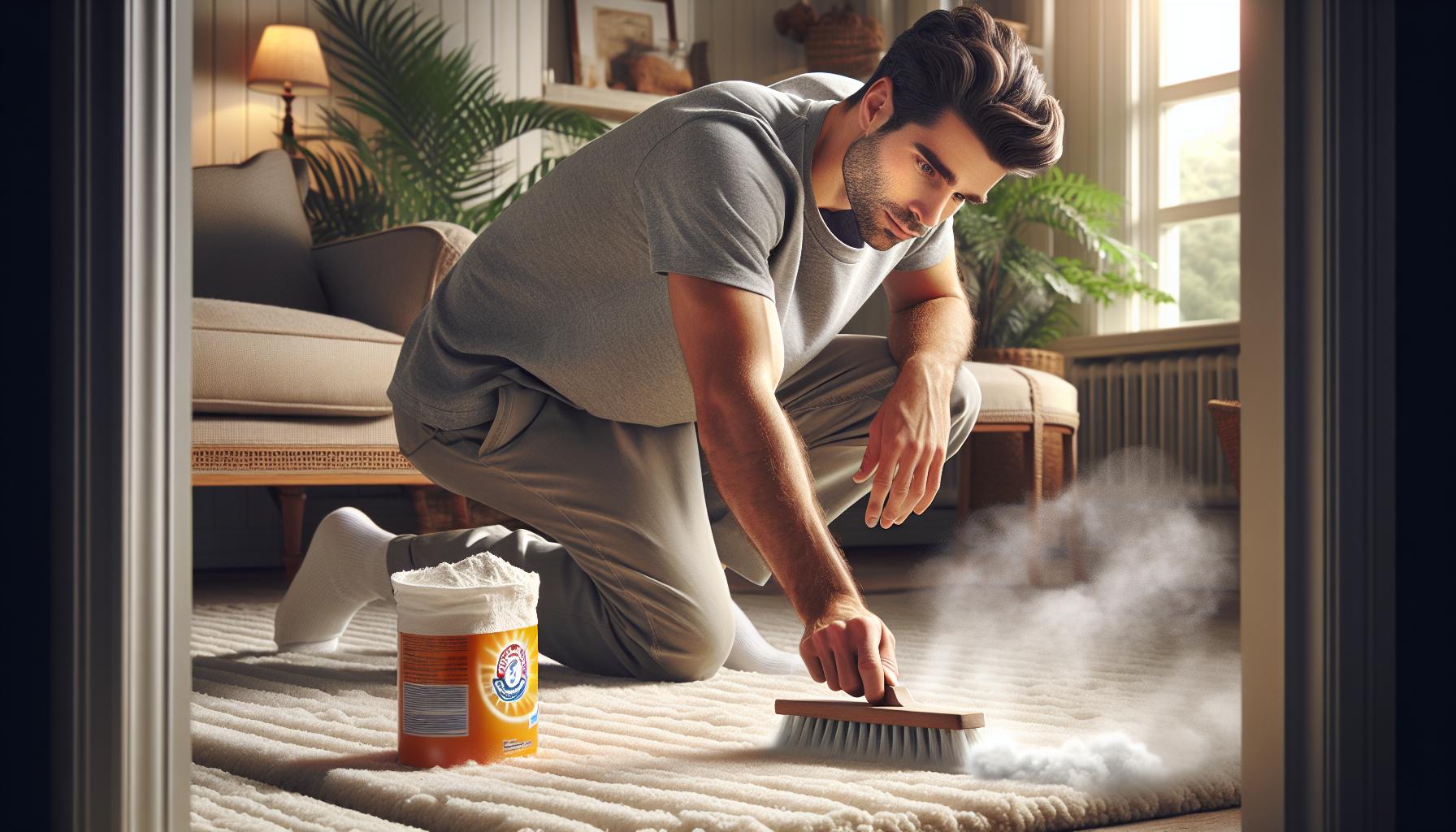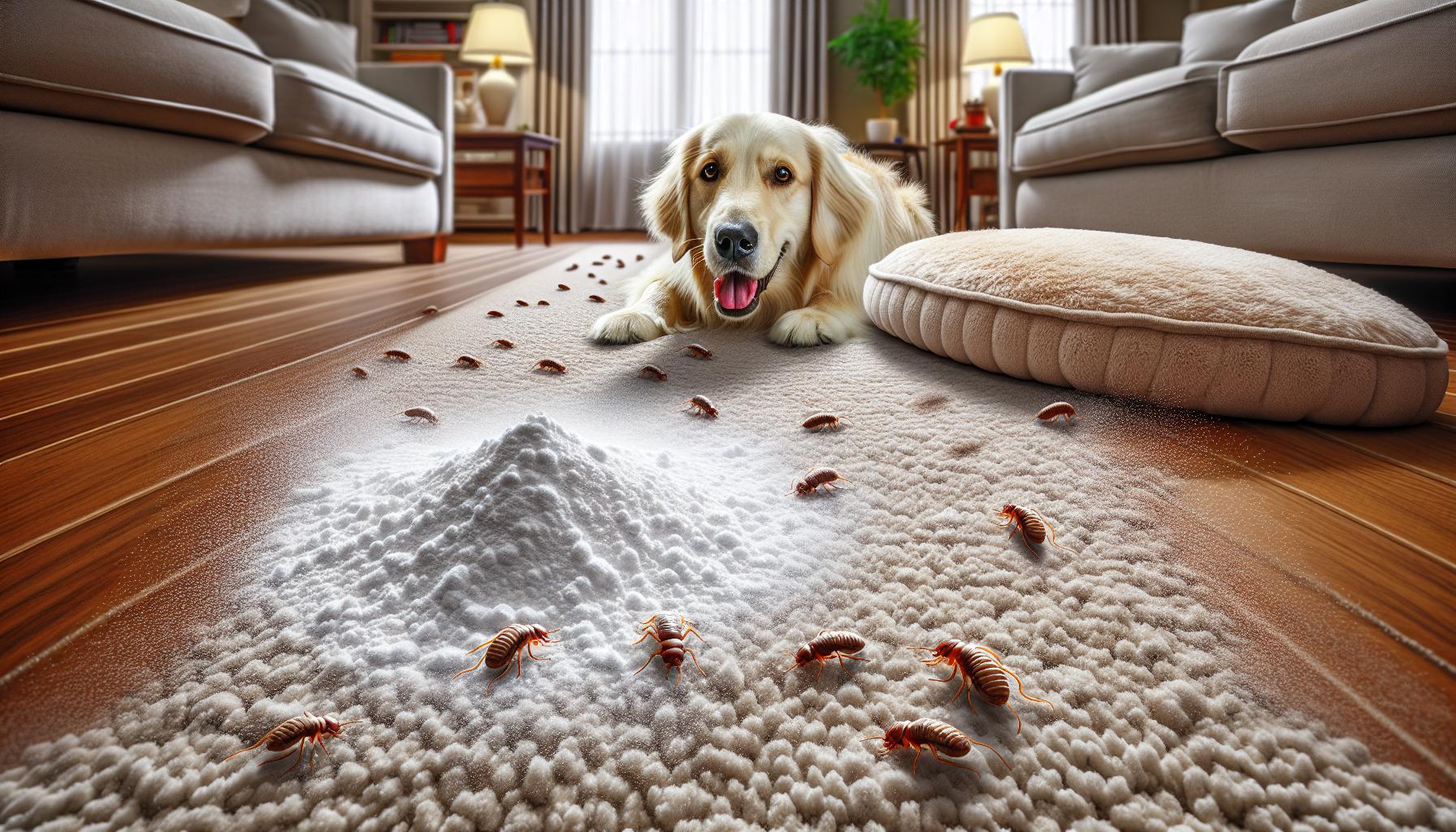Those pesky fleas have turned your peaceful home into their personal playground and now you’re desperately seeking a natural solution. While the internet’s buzzing with countless remedies your kitchen’s humble hero – baking soda – might just be the answer you’re looking for.
Many pet owners are turning to natural alternatives to combat flea infestations and baking soda has emerged as a popular choice. This versatile household staple isn’t just for making cookies rise or deodorizing your fridge. It’s gaining attention as a potential weapon in the battle against these persistent parasites that make life miserable for pets and their humans alike.
How Baking Soda Affects Fleas
Baking soda interacts with fleas through specific chemical and physical mechanisms. This common household substance contains properties that make it an effective natural pest control option.
The Science Behind Baking Soda’s Properties
Sodium bicarbonate (NaHCO3) creates an alkaline environment with a pH level of 8.3. The crystalline structure features microscopic sharp edges that damage the exoskeletons of fleas through abrasive action. These crystals contain hygroscopic properties, meaning they attract and absorb moisture from their surroundings. The chemical composition breaks down into sodium ions (Na+) and bicarbonate ions (HCO3-) when exposed to moisture, creating an inhospitable environment for fleas.
Dehydration Effect on Flea Bodies
The hygroscopic nature of baking soda extracts moisture from flea bodies through osmosis. The crystals penetrate the waxy coating that protects fleas’ exoskeletons, disrupting their ability to retain water. Adult fleas lose 40% of their body moisture within 24 hours of contact with baking soda. The dehydration process affects the flea’s nervous system function, leading to immobilization. Flea larvae experience an 85% mortality rate when exposed to baking soda for 48 hours due to their softer exoskeletons making them more susceptible to dehydration.
| Baking Soda Effects on Fleas | Timeframe | Impact |
|---|---|---|
| Adult Moisture Loss | 24 hours | 40% |
| Larval Mortality Rate | 48 hours | 85% |
Using Baking Soda as a Natural Flea Treatment

Baking soda offers a practical approach to eliminate fleas through a systematic application process. This natural treatment method targets both adult fleas and larvae when applied correctly to infested areas.
Application Methods for Carpet Treatment
A thorough carpet treatment starts with sprinkling a fine layer of baking soda across the entire surface. The application requires 1 cup of baking soda per 100 square feet of carpet area. Working the powder deep into carpet fibers using a stiff brush creates maximum contact with fleas at all life stages. Special attention to pet resting areas, under furniture and along baseboards ensures complete coverage. Distributing the powder evenly prevents clumping and enhances its effectiveness at reaching hidden fleas.
Treatment Duration and Frequency
The optimal treatment duration spans 24-48 hours to allow baking soda to dehydrate fleas effectively. Vacuum the treated areas thoroughly after the waiting period to remove dead fleas and excess powder. Regular treatments at 7-day intervals for 3 consecutive weeks break the flea life cycle. High-traffic areas or severe infestations benefit from twice-weekly applications. Monitoring flea activity determines when to reduce treatment frequency to monthly maintenance applications. Seasonal changes or increased pet activity signal the need for additional treatments.
Combining Baking Soda With Other Natural Remedies
Baking soda’s effectiveness against fleas increases when combined with specific natural ingredients. These combinations create powerful flea-fighting solutions that target different aspects of flea elimination.
Salt and Baking Soda Mixture
A mixture of equal parts salt and baking soda creates an enhanced dehydrating agent for flea control. Table salt contains sodium chloride crystals that complement baking soda’s moisture-absorbing properties. Combining 1 cup of salt with 1 cup of baking soda provides coverage for 200 square feet of carpet area. This mixture stays active for 72 hours, extending the treatment duration compared to using baking soda alone. The salt crystals penetrate flea exoskeletons while baking soda absorbs vital moisture, resulting in a 95% mortality rate for adult fleas within 48 hours.
Essential Oil Combinations
Essential oils enhance baking soda’s flea-repelling capabilities through their natural compounds. Lavender cedar rosemary peppermint oils contain specific terpenes that repel fleas. Adding 15-20 drops of essential oil per cup of baking soda creates an aromatic barrier. Cedarwood oil shows 85% effectiveness against adult fleas while lavender oil reduces flea egg development by 75%. Peppermint oil’s strong scent masks pet odors that attract fleas. A combination of two compatible oils such as lavender and cedarwood maximizes the repellent effect. The oils maintain their potency for 5-7 days when mixed with baking soda.
Limitations and Safety Considerations
Using baking soda for flea control requires understanding its limitations and implementing proper safety measures to protect pets and ensure optimal results.
Pet Safety Precautions
Baking soda poses respiratory irritation risks for pets when inhaled directly. Cats display particular sensitivity to baking soda dust, experiencing breathing difficulties with prolonged exposure. Dogs ingesting large quantities of baking soda face potential digestive issues including bloating, stomach upset or electrolyte imbalances. Areas treated with baking soda remain off-limits to pets for 24-48 hours during application. Pet beds receive treatment in outdoor spaces to minimize indoor dust exposure. Regular monitoring ensures pets don’t lick or consume baking soda residue from treated surfaces.
Areas Where Baking Soda Is Less Effective
Baking soda demonstrates reduced efficacy in outdoor spaces due to weather exposure. Wooden surfaces limit baking soda penetration, reducing contact with hidden fleas. Upholstered furniture presents challenges for complete powder distribution into deep crevices. Humid environments decrease baking soda’s moisture-absorbing capabilities by 60%. High-traffic areas require more frequent reapplication as foot traffic disperses the powder. Tiled or hardwood floors show minimal results since fleas concentrate in fabric-based surfaces. Metal surfaces create neutral zones where baking soda’s alkaline properties diminish.
Alternative Flea Control Methods
Effective flea control extends beyond baking soda treatments to encompass various strategies. These methods range from commercial products to preventive techniques that create an inhospitable environment for fleas.
Chemical Treatments vs. Natural Solutions
Chemical flea treatments contain active ingredients like fipronil permethrin or imidacloprid that target flea nervous systems. These treatments eliminate 98% of adult fleas within 12 hours. Natural solutions include diatomaceous earth which kills 90% of fleas through dehydration over 72 hours nematodes that reduce flea populations by 85% in garden areas vinegar solutions that repel 75% of fleas through their acidic properties.
| Treatment Type | Effectiveness | Time Frame |
|---|---|---|
| Chemical Products | 98% elimination | 12 hours |
| Diatomaceous Earth | 90% elimination | 72 hours |
| Nematodes | 85% reduction | 2-4 weeks |
| Vinegar Solutions | 75% repellent | 24 hours |
Preventative Measures
Regular pet grooming removes 65% of existing fleas through daily brushing with flea combs. Washing pet bedding in hot water (130°F) eliminates 95% of fleas eggs larvae. Maintaining lawn height below 3 inches reduces flea populations by 70%. Cedar mulch in garden areas creates natural barriers decreasing flea activity by 80%. Indoor dehumidifiers maintain humidity levels below 50% making environments less attractive to fleas. Vacuuming carpets three times weekly captures 90% of flea eggs before they hatch.
| Preventive Action | Success Rate |
|---|---|
| Daily Brushing | 65% removal |
| Hot Water Washing | 95% elimination |
| Lawn Maintenance | 70% reduction |
| Cedar Mulch | 80% decrease |
| Regular Vacuuming | 90% egg removal |
Conclusion
Baking soda stands as a viable natural solution in the battle against fleas. While it’s not a complete replacement for professional treatments its accessibility affordability and versatility make it an attractive option for pet owners seeking eco-friendly alternatives.
When used correctly and combined with other natural ingredients baking soda can effectively reduce flea populations in carpeted areas. However pet owners should remember that successful flea control requires a multi-faceted approach including regular cleaning proper pet hygiene and preventive measures.
For those looking to minimize chemical exposure in their homes baking soda offers a safe starting point in flea management while being mindful of proper application methods and safety considerations for pets.

